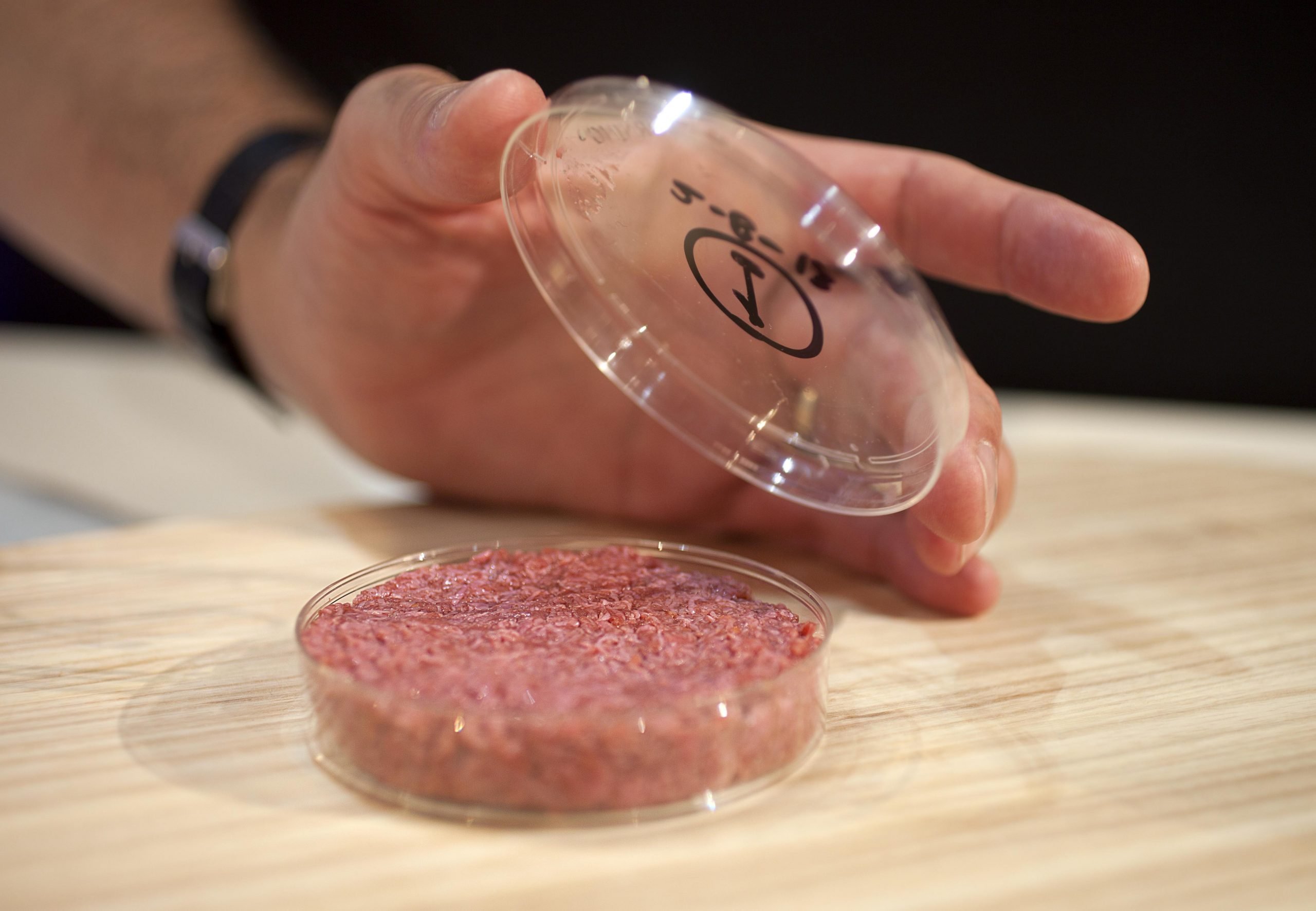
With one stem cell of a cow, you can culture thousands of kilos of meat. In theory, it is even possible to grow enough meat in 25.000-litre bioreactors to feed tens of thousands of people for a year. So why is this not happening yet?
In 2013, the first burger of cultured meat was presented in London. Mark Post, affiliated to Maastricht University, grew the burger with the financial support of Google founder Sergey Brin. The piece of meat cost more than 250.000 euros. Now, about 5 years later, the price has already dropped quite a lot: “For a kilo of clean meat you would pay around 60 euros”, Post says during the fourth international congress on cultured meat in Maastricht. Here scientists, investors, entrepreneurs and interest groups come together to discuss the latest developments in research and regulation.
The fact that we have not switched massively to cultured meat is not only because of the costs. In order to be able to culture the meat on an industrial scale, it is necessary to get rid of the fetal bovine serum (FBS) that is currently used. This serum, which contains blood from unborn calves, contains many different types of proteins that stimulate the multiplication of stem cells. This is the way meat ‘grows’. But the use of fetal bovine serum is controversial, so scientists look for alternatives where the proteins come from other sources. Examples already exist – fermentation of microbes or extracts of fungi. It is also possible to genetically manipulate bacteria to produce proteins. “FBS is not animal-friendly and there is not enough of it to grow meat on a large scale, especially when the number of animals will shrink if we will switch more to cultured meat. We have alternatives, but they must also be applicable on a large scale. That is the big challenge right now”, says Post.

Franken-meat
Another challenge is whether consumers will accept meat from a lab. “It looks like they have a different opinion every day”, jokes Chris Bryant. Bryant is connected to the University of Bath in England where he does research in consumer acceptance of cultured meat. “Research all over the world shows something different every time. In one study women are unwilling to try it, while another shows that men don’t want to eat cultured meat.” The scientist has no answer to why this is so. Bryant does indicate that the more people know about cultured meat and the idea behind it, the faster they get used to the idea of eating it.
“People who know nothing about it tend to say it is unnatural franken-meat because it comes from a lab. While people with more knowledge about cultured meat say it is animal-friendly, better for the climate and they see it as a possible solution to the food problem and therefore would eat it. That’s good I think; there’s more and more information about it, so consumers see it less as a scary science fiction product. There will be a time when children will see a cow and ask: Did we really have cows for meat in the past?”

Regulatory
But that will take some time because there is no legislation on cultured meat yet. It is part of a new product and has to meet all kinds of requirements. According to European legislation, this takes about 9 to 24 months. “A file must be created in which food producers demonstrate that the product is safe, it must not mislead consumers and it must contain the same nutrients as the original product – meat in this case”, says Karin Verzijden. Verzijden is a lawyer and specialises in regulation in the food and pharmaceutical industry. She recommends that producers or developers of cultured meat talk to policymakers at an early stage. Elizabeth Derbes of The Good Food Institute also joins in: “Make clear what the risks can be and tell them how to solve them if something goes wrong.”
According to Post, that’s a difficult thing: ‘The EU is currently very cautious, they are afraid to make any statements. Maybe they don’t want to repeat the biofuel scenario, where they made a decision too quickly. Especially when it comes to genetically engineered solutions (for example, for FBS), they are really reserved. Of course, that doesn’t help in the development.” But he remains positive: “I see this cautious attitude change more and more. Cultivated meat will not immediately replace traditional meat at the center of our plates, it will first become a luxury product that develops into a product for everyone.”
Photo: David Parry/PA

